Lilies LA hybrids: description, varieties and cultivation
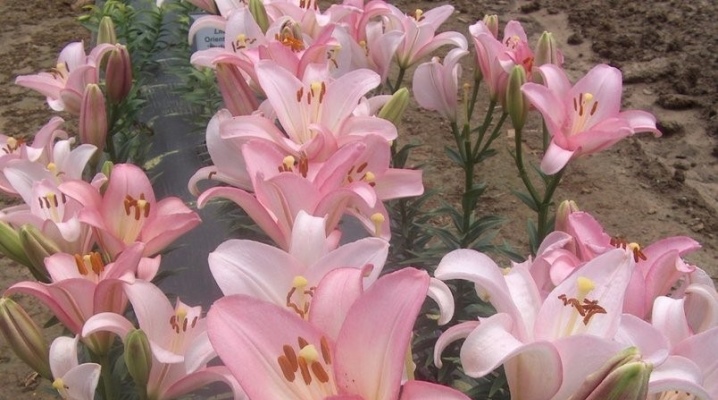
Every gardener tries to turn his garden into a beautiful oasis, which, with its appearance, will make an indelible impression not only on household members, but also on neighbors and passers-by. That is why much attention is paid to the choice of plants for planting. Lilies of LA hybrids are unusual and to some extent unique in nature. These flowers are distinguished by a large number of features that are not inherent in any other garden plant. You should know how to properly plant and care for plants.
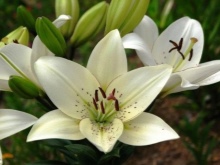
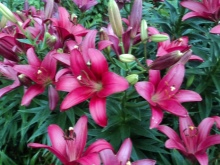
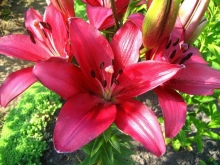
Peculiarities
At its core, the LA hybrid lily is a product of breeding work. Translated from Latin, LA-hybrid means Longiflorum-Asian-Hybrid. A similar plant was born thanks to the crossing of the Long-flowered and Asian hybrids. Thus, the flower acquired the characteristics of both plants. However, it is unique and unlike any other plant.

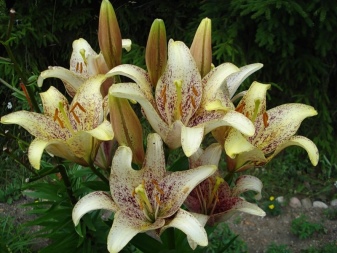
If we talk about the distinctive features of lilies belonging to the category of LA hybrids, then first of all, it should be noted that such flowers have excellent characteristics:
- aesthetically pleasing appearance;
- simplicity and unpretentiousness in terms of care;
- ease of reproduction and breeding.
Due to these properties, such plants are chosen not only by experienced and professional gardeners, but also by beginners.
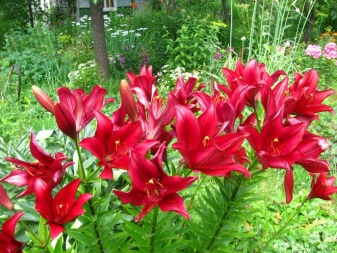
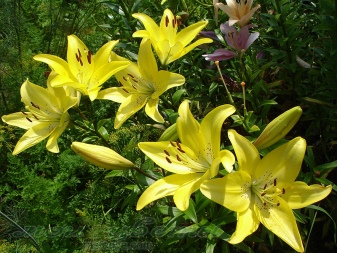
Lilies have very large flowers, which can reach 25 cm in diameter. In shape, the inflorescences can resemble a bowl or goblet. In addition, there are so-called intermediate forms, which in their appearance look like a tube or a goblet. The peduncle can include several buds, which can be either unidirectional or multidirectional. Most often, the lily buds of LA hybrids are directed either upward or to the side. In addition to their unique appearance, lilies have an unusual aroma that attracts many.
The leaves of the plant are quite strong in structure, so they stick tightly to the receptacle. Such properties of a flower allow it to tolerate adverse environmental phenomena: for example, bad weather (rain or wind), as well as transportation from one place to another. In addition, hybrids are winter hardy.
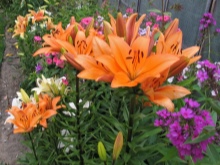
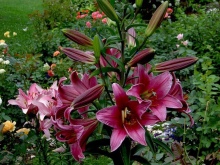

If we talk about the time of the appearance of LA hybrids lilies, then it should be clarified that this happened in the 90s of the last century. Thus, plants have not been around that long. Nevertheless, during this time, breeders managed to bring out a large number of various varieties of lilies, which have a rich color range: there are both monochromatic varieties and colored ones.
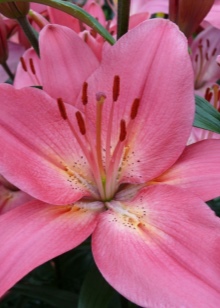
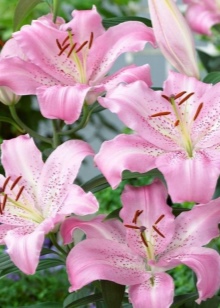
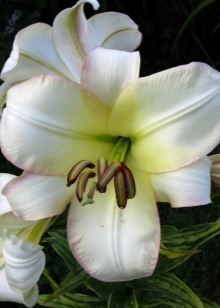
Varietal variety
Today there are a large number of varieties of LA hybrids lilies, each of which has its own unique features and characteristics. Let's consider a description of the most common ones.
- Brindisi. Plants of this variety are bright pink in color. The diameter of the flowers can reach 18 cm. Flowers are well suited for planting not only in the open field, but also for home cultivation in a pot or planter.
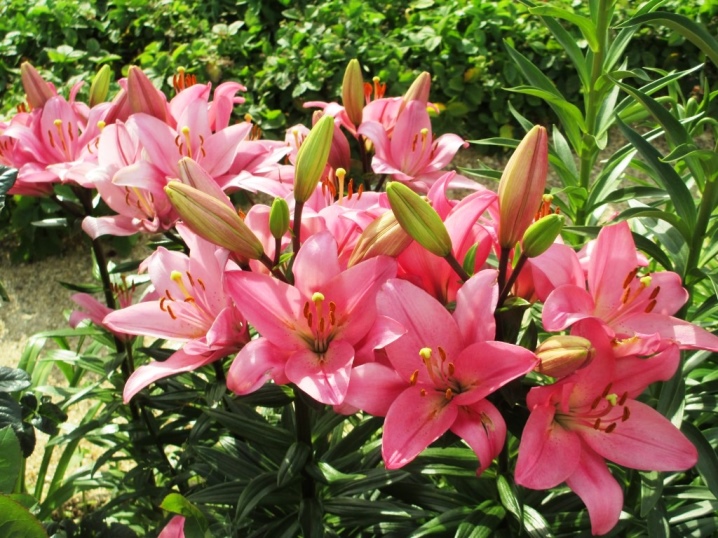
- "Original Love". A lily with bright red flowers can grow up to 120 cm in height. The flowering period is in July.Lily differs from all other varieties with its unusual characteristic aroma.
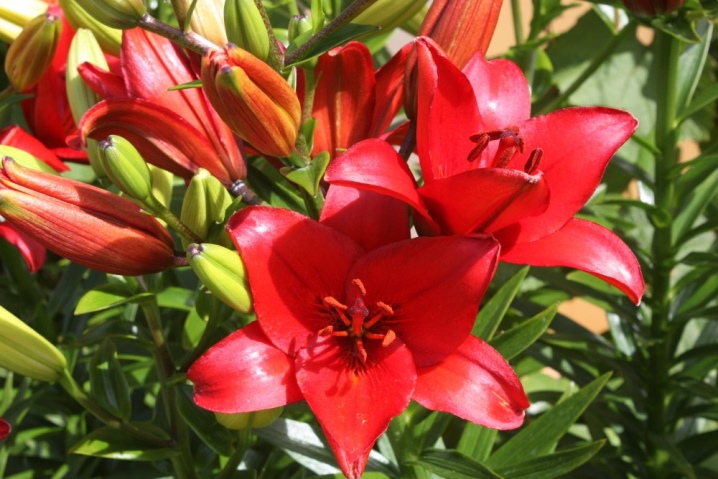
- Epricot Fudge. This flower belongs to the exotic group. The inflorescence in its shape resembles a half-open rose or tulip. It has a beautiful peach-apricot shade.
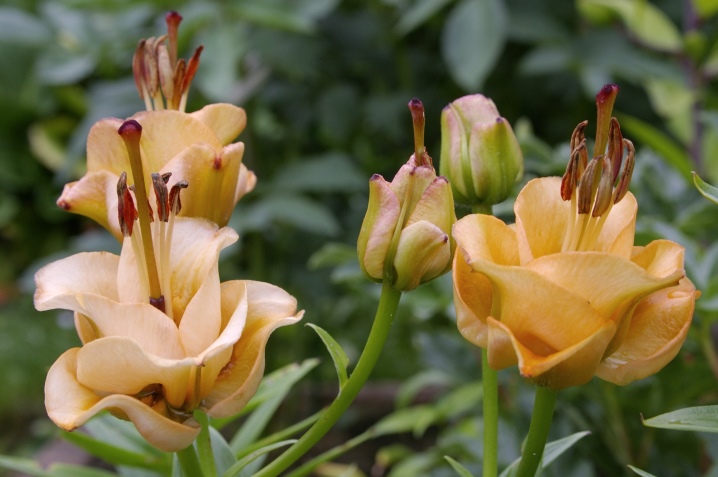
- Ercolano. The petals of this variety have a curved shape. The main color is white, but a green tint can be observed in the middle. Flowers can be up to 17 cm in diameter.
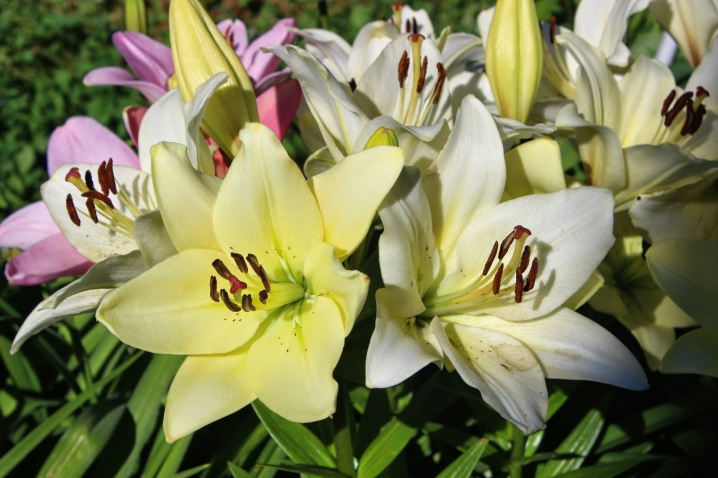
- Sigalon. Burgundy flowers can be up to 20 cm in diameter. They have a delicate delicate aroma. They can bloom throughout the summer.
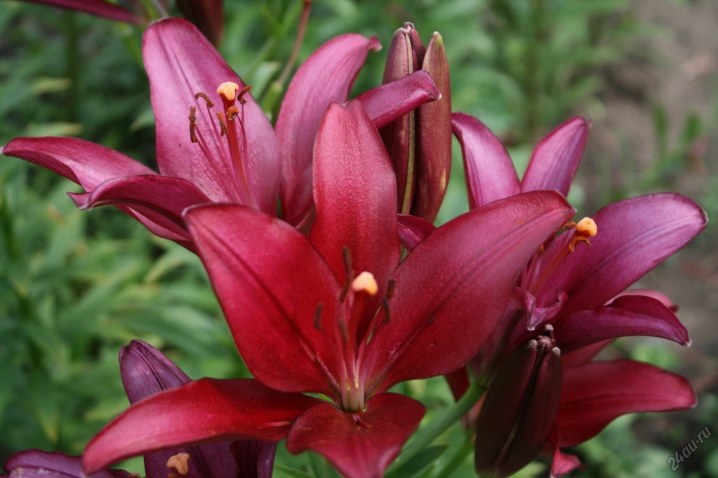
- Royal Sunset. Painted in 2 colors: pink and orange. Most often they are used in group plantings, mixborders, flower beds, for cutting.
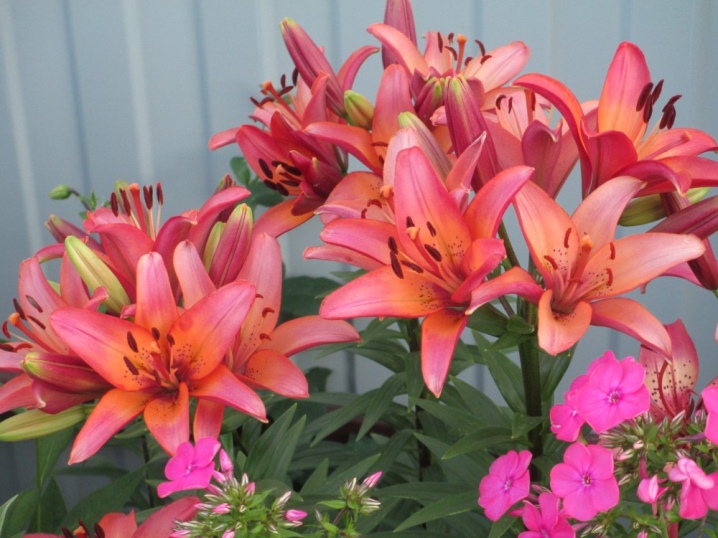
Thus, every gardener will be able to choose a plant that will perfectly fit into the design of any site and will become its highlight.
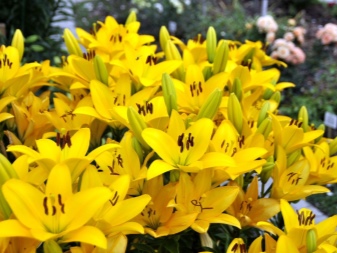
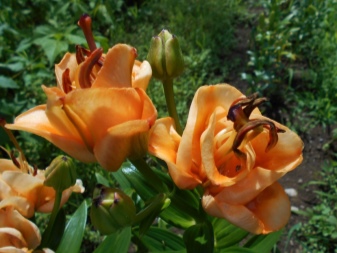
How to plant?
The most optimal season for planting LA hybrids lilies is spring and autumn. It is best to plant the plants in early April or the first half of October. It should be borne in mind that the most important condition for planting is compliance with the required temperature regime: the thermometer should not fall below + 15 ° C. It is this temperature regime that allows the plant bulb to take root well and take root in the soil. Moreover, the higher the air temperature, the more difficult and longer these processes will take place.
When choosing a suitable site, those that are well illuminated by the sun's rays should have an undeniable advantage. Ideally, the sun will illuminate the plant from early morning until lunchtime. If you plant a LA hybrid in a darkened place, the plant will lose its decorative properties, but will not die.
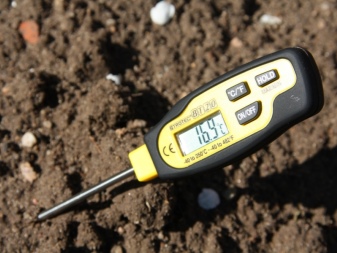

Before proceeding with the direct planting procedure, it is important to dig up the area where the lily will grow in the future. It should be borne in mind that the digging depth should be about 40 cm. Half of this depth will be needed for planting the plant, and the other half is needed to place the root system. And also it is necessary to take into account the quality of the soil: if it is rather heavy, then you need to add a small amount of sand to it. Moreover, it is allowed to use only washed river sand, and quarry clay material is prohibited. It is recommended to add sand in a ratio of 1 bucket per 1 m 2.

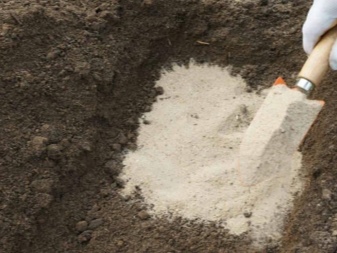
24 hours before you plant the bulb of the plant in the ground, the hole must be filled with water. The disembarkation procedure itself is allowed to be carried out only in dry weather. Before placing the onion in the hole, it should be moistened with water.
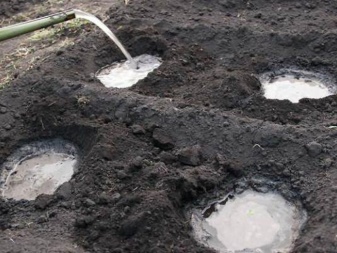

Correct care
Proper care is the basis for long-term active growth and good development of LA-hybrid lilies. The most important step in caring for a plant is its proper watering. So, in June and the first half of July it is recommended to water the lily by the root method... This is due to the fact that getting liquid on the leaves of the flower can cause a serious burn. In addition, after watering, it is imperative to carry out the mulching procedure, as it will ensure the preservation of the required amount of liquid inside the soil.
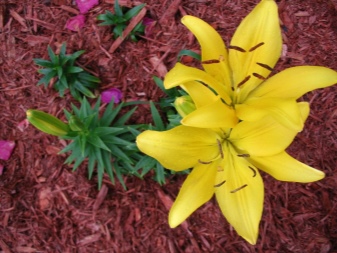
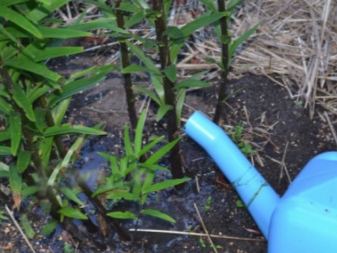
As for the feeding and fertilization procedures, it should be borne in mind that these processes should consist of several stages. So, it is recommended to apply fertilizers for the first time at the beginning of spring during that period, while the plant has not yet formed the first shoots. The next feeding is done during the formation of buds. At the same time, double superphosphate, potassium magnesium or ready-made mineral complexes (the latter are used dissolved in water) are most often used as a fertilizer mixture. And also manure can be used as fertilizer. However, in this case it must be borne in mind that it is strictly forbidden to use fresh material.
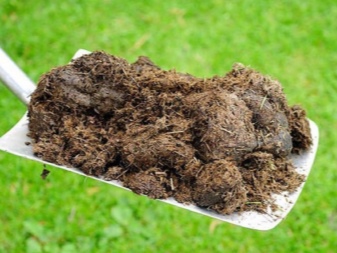

Reproduction methods
To propagate the LA hybrid lily with your own hands at home, you should resort to the most common and simple vegetative method. So, in order to carry out vegetative reproduction, it is necessary to wait for the maturity of the specimen... When the lily reaches the age of 3 or 4 years, the plant forms several daughter bulbs (babies). Usually at this stage, their number varies in the range from 3 to 7 pieces.
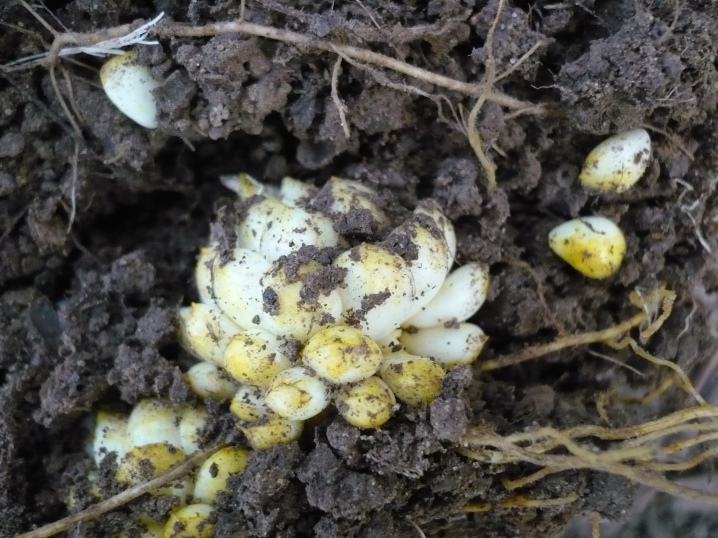
In early spring or autumn (at the same time when it is recommended to plant a plant), a mature flower with formed daughter bulbs is dug up, and then the children are carefully separated. For reproduction, babies and mother bulbs are planted separately (as described above). In this case, you should follow simple rules:
- the transplant procedure is recommended to be carried out in cloudy weather;
- plants need to be transferred with a large clod of earth.
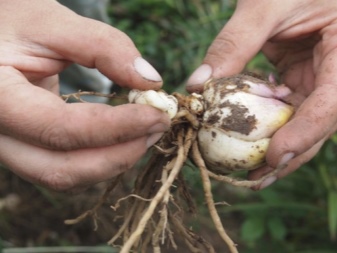
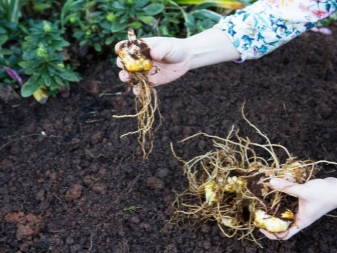
Diseases and pests
Lilies, which belong to the LA hybrids group, have good immunity and are quite resistant to diseases and pests. However, some ailments can affect the growth and development of the plant. Botanists as well as experienced gardeners report that lilies are most often affected by fungal diseases and bacterial rot.
In that case, if you notice the initial signs of the development of the disease, you must immediately begin to heal the plant... First of all, it is necessary to remove all the affected areas of the plant, and then treat the entire flower with a copper-containing preparation (HOM, Oxyhom or 1% Bordeaux mixture solution). If your lily has been affected by a bacterial infection, then biological fungicides must be used: for example, Trichodermin, Gamair or Fitosporin.
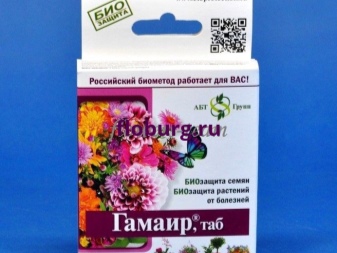

As for pests and unfavorable microorganisms, most often LA-class lilies infect root onion mites, lily fly larvae or aphids. If you notice these insects at the initial stage of the lesion, then you can get rid of them with the help of a soap solution or infusion of ash. If the bush is affected quite intensely, then it is recommended to use insecticides.


Examples in garden design
Lilies LA-hybrids are plants that will be an excellent decoration for any garden or vegetable garden, as well as a personal plot or public area. That is why these flowers are very popular among landscape designers.
So, from hybrid lilies, you can create unusual flower beds, using only monochromatic plants or by combining multi-colored varieties of lilies... In addition, lilies can be complemented with other flowers of similar or contrasting shades.
With the help of LA hybrids, you can decorate gazebos, slides and rock gardens. And also lilies can be planted around the perimeter of the house, near the entrance or along the paths.
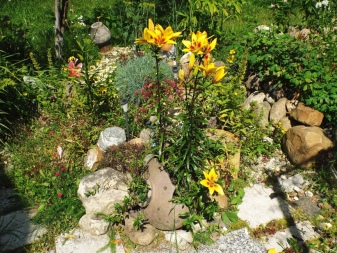
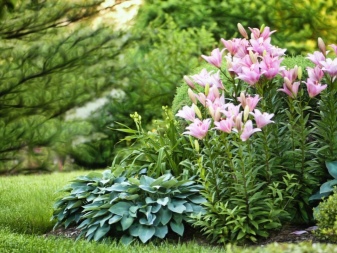
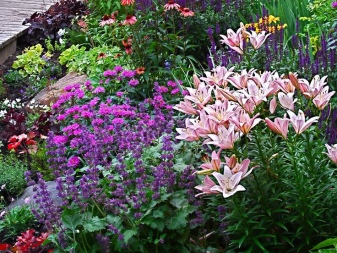

For Lily LA hybrids, see the video below.







































































































The comment was sent successfully.